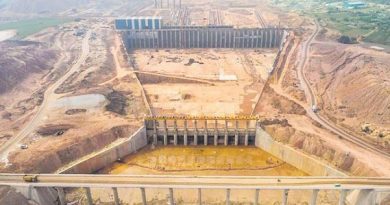RBI Issues Draft Disclosure Framework For Banks Over Climate-Change Risks
 RBI Issues Draft Disclosure Framework For Banks Over Climate-Change Risks
RBI Issues Draft Disclosure Framework For Banks Over Climate-Change Risks
By-Lakshita Kapoor
The Reserve Bank of India (RBI) has proposed draft guidelines to help the regulated financial institutions (banks and NBFCs) in the country to become more open for their disclosures over climate change lending. This comes at a time when the demand for climate-related lending and green projects has escalated. The central bank has asked the stakeholders to submit their responses to the draft norms by April 30.
“These guidelines shall be applicable to all Scheduled Commercial Banks (excluding Local Area Banks, Payments Banks and Regional Rural Banks), All Tier-IV Primary (Urban) Co-operative Banks, All All-India Financial Institutions (viz. EXIM Bank, NABARD, NaBFID, NHB and SIDBI) and All Top and Upper Layer Non-Banking Financial Companies (NBFCs),” a notification from RBI read.
The central bank said that with the increasing threat of climate change and the associated physical damage, changes in market perception, and the transition towards more environment-friendly products and services, the impact of climate change on REs is inevitable.
“The REs also play an important role in financing the transition towards an environmentally sustainable economy. It is, therefore, imperative for the REs to implement robust climate-related financial risk management policies and processes to effectively counter the impact of climate-related financial risks,” it said.
With these draft norms, RBI has planned to push the banks to make more disclosures about climate change-related financing risks. The draft norms are related to creation of a framework for the same. ” There is a need for a better, consistent and comparable disclosure framework for REs, as inadequate information about climate-related financial risks can lead to mispricing of assets
and misallocation of capital by them. Accordingly, it has been decided to put in place a standard Disclosure framework for REs on Climate-related Financial Risks,” the RBI notification read.
Back in July 2021, the RBI also talked about climate risks and sustainable finance. The central regulator explained all the different ways climate change could cause problems for the banks and what they could do about it. RBI said that banks needed to have good plans in place to deal with climate change risks.
Why does this matter?
When banks share information about climate risks, it helps everyone understand what might happen because of climate change. Customers, people who put money in the bank, investors, and even the government all need to know about these risks.
So, what are the draft norms?
RBI wants banks to be clear about the risks they face because of climate change. They want banks to talk about these risks and also the opportunities they might have because of climate change. This way, people can see if a bank is prepared for climate change or not.
These norms if approved would apply to different sets of banks and NBFCs, ranging from the big ones to smaller ones. Even financial institutions like EXIM Bank, NABARD, and others have to follow these rules. However, foreign banks can choose if they want to comply with these rules while operating in India.
The new draft norms also talk about four main things banks need to tell everyone about:
- Governance: This means explaining how the bank leaders make decisions about climate risks.
- Strategy: This is about the plans the bank has to deal with climate risks and how they might affect the bank in the short, medium, and long term.
- Risk Management: Banks need to say how they identify and deal with climate risks in their overall risk management process.
- Metrics and Targets: Banks have to share information about how they’re doing when it comes to dealing with climate risks, like how much greenhouse gas they produce and what they’re doing to reduce it.
Overall, these new rules from the RBI are meant to make banks more transparent about how they’re dealing with climate change. By being open about these risks, banks can better prepare themselves and help their customers and investors understand what might happen in the future.




